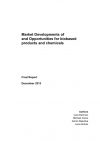Showing 341–360 of 424
-
“Sources of microplastics relevant to marine protection in Germany” − Article in bioplastics MAGAZINE
Sustainability & Health
3 Pages
630 Downloads
630 Downloads
2014-06
FREE
630
Downloads -
9 Downloads
2014-06
FREE
9
Downloads -
Mikroplastik in der Umwelt – Quellen, Folgen und Lösungen 2014 – Proceedings
Sustainability & Health, Technology
19 Downloads
19 Downloads
2014-06
FREE
19
Downloads -
“Wood-Plastic Composites (WPC) and Natural Fibre Composites (NFC): European and Global Markets 2012 and Future Trends in Automotive and Construction” − Article in bioplastics MAGAZINE (2014)
Markets & Economy
3 Pages
1195 Downloads
1195 Downloads
2014-06
FREE
1195
Downloads -
3rd Conference on CO2-based Fuels, Chemistry and Polymers 2014 Proceedings
Markets & Economy
32 Downloads
32 Downloads
2014-06
FREE
32
Downloads -
nova-Paper #3 on bio-based economy: “GreenPremium prices along the value chain of bio-based products” − Full version
Markets & Economy
12 Pages
2548 Downloads
2548 Downloads
2014-05
FREE
2548
Downloads -
Study on investment climate in bio-based industries in the Netherlands − Full version
Markets & Economy
24 Pages
939 Downloads
939 Downloads
2014-05
FREE
939
Downloads -
Partnerstudy: Suurs, R.A.A. & Roelofs, E.M.G. Quickscan biobased investment climate. TNO. 2014. − Summary results
Markets & Economy
17 Pages
673 Downloads
673 Downloads
2014-04
FREE
673
Downloads -
Partner study: Suurs, R.A.A. & Roelofs, E.M.G. Quickscan biobased investment climate. TNO. 2014. − Quickscan investeringsklimaat voor biobased bedrijven
Markets & Economy
36 Pages
508 Downloads
508 Downloads
2014-04
FREE
508
Downloads -
“Ökologische Innovationspolitik – Mehr Ressourceneffizienz und Klimaschutz durch nachhaltige stoffliche Nutzungen von Biomasse” − Ausführliche Lebenszyklusanalysen (AP 4)
Policy
87 Pages
530 Downloads
530 Downloads
2014-03
FREE
530
Downloads -
“Ökologische Innovationspolitik – Mehr Ressourceneffizienz und Klimaschutz durch nachhaltige stoffliche Nutzungen von Biomasse” − Berechnung Fördersätze Bioenergie (AP 7)
Policy
14 Pages
445 Downloads
445 Downloads
2014-03
FREE
445
Downloads -
“Ökologische Innovationspolitik – Mehr Ressourceneffizienz und Klimaschutz durch nachhaltige stoffliche Nutzungen von Biomasse” − Daten zu Szenarien und Modellen (AP 9)
Policy
17 Pages
434 Downloads
434 Downloads
2014-03
FREE
434
Downloads -
“Ökologische Innovationspolitik – Mehr Ressourceneffizienz und Klimaschutz durch nachhaltige stoffliche Nutzungen von Biomasse” − Erläuterung steuerliche Instrumente (AP 8)
Policy
8 Pages
444 Downloads
444 Downloads
2014-03
FREE
444
Downloads -
“Ökologische Innovationspolitik – Mehr Ressourceneffizienz und Klimaschutz durch nachhaltige stoffliche Nutzungen von Biomasse” − Metaanalyse oekonomische Effekte (AP 9)
Policy
12 Pages
485 Downloads
485 Downloads
2014-03
FREE
485
Downloads -
“Ökologische Innovationspolitik – Mehr Ressourceneffizienz und Klimaschutz durch nachhaltige stoffliche Nutzungen von Biomasse” − Vollversion
Policy
231 Pages
741 Downloads
741 Downloads
2014-03
FREE
741
Downloads -
“Ökologische Innovationspolitik – Mehr Ressourceneffizienz und Klimaschutz durch nachhaltige stoffliche Nutzungen von Biomasse” − Kurzfassung
Policy
40 Pages
670 Downloads
670 Downloads
2014-03
FREE
670
Downloads -
“Environmental Innovation Policy – Greater resource efficiency and climate protection through the sustainable material use of biomass” − Short version
Policy
37 Pages
802 Downloads
802 Downloads
2014-03
FREE
802
Downloads -
11 Downloads
2013-12
FREE
11
Downloads -
Market Developments of and Opportunities for biobased products and chemicals − Full version
Markets & Economy
67 Pages
2076 Downloads
2076 Downloads
2013-12
FREE
2076
Downloads -
The European Hemp Industry: Cultivation, processing and applications for fibres, shivs and seeds − Full version
Markets & Economy
9 Pages
110 Downloads
110 Downloads
2013-10
FREE
110
Downloads



![Proceedings 7th Conference on Bio-based Materials 2014 [Digital]](https://renewable-carbon.eu/publications/wp-content/uploads/2020/05/21-01-07_RC-Publications-Cover-Proceedings_Bio-based-Materials-100x141.png)
![Mikroplastik in der Umwelt – Quellen, Folgen und Lösungen 2014 - Proceedings [Digital]](https://renewable-carbon.eu/publications/wp-content/uploads/2020/05/21-01-07_RC-Publications-Cover-Proceedings_1-100x141.png)

![3rd Conference on CO2-based Fuels, Chemistry and Polymers 2014 Proceedings [Digital]](https://renewable-carbon.eu/publications/wp-content/uploads/2020/05/21-01-07_RC-Publications-Cover-Proceedings_CO2-based-100x141.png)

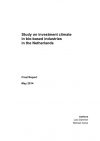


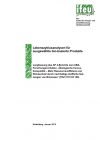


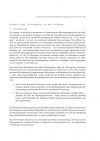
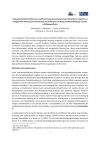

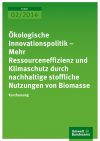
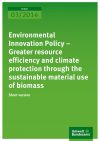
![Proceedings Fifth German WPC Conference 2013 [Digital]](https://renewable-carbon.eu/publications/wp-content/uploads/2020/05/21-01-07_RC-Publications-Cover-Proceedings_Biocomposites-100x141.png)
